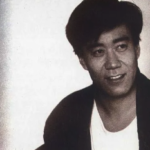
Joe Hisaishi
Interviewer: To begin with, what inspired your compositions for “Laputa”?
“The foundational concept was to mirror the film’s essence, encapsulating love, dreams, and adventure. Specifically, I aimed for a tune that radiates warmth for children, marked by a lucid melody. That was the core intention.”
Interviewer: Sounds quite challenging, right?
“Absolutely. Crafting a vibrant tune that resonates with emotions is tough. Yet, this was a hurdle I felt compelled to overcome. In terms of the sonic quality and visuals, I was set on an acoustic approach from the outset. While “Arion” had a plethora of sound samples, “Laputa” pivots on a fundamental acoustic foundation.”
Interviewer: But when one hears it, it sounds extensively orchestrated, correct?
“Indeed. We had an ensemble of fifty in the orchestra, likely a record for a Japanese film. The studio was packed due to the sheer number of participants. We also incorporated the state-of-the-art synthesizer, the Fairlight. Consequently, the budget was roughly triple the usual.”
Interviewer: As with “Nausicaa,” did you engage in thorough discussions with the producer, Isao Takahata?
“Well, it wasn’t all that intense. Having previously collaborated on “Nausicaa” with Mr. Takahata, our interactions were relatively relaxed. But the depth of our discussions was profound. Prior to composing the film’s score, we crafted the image album “A Girl Who Fell from the Sky.” Both of us had its melodies echoing in our minds, shaping our shared vision for each scene. This unique method, a deep-dive into mutual understanding, isn’t something everyone undertakes. Essentially, “Laputa” music was conceptualized in two phases.”
Interviewer: So, the composition aligns directly with the film’s rough cut visuals?
“Exactly. Thanks to technological advancements, it’s now feasible to sync music with visuals with near-perfect precision. I’d align it and then present it to Mr. Takahata and Mr. Miyazaki for feedback. Mr. Takahata once remarked on the unexpected perfection of this synchronization. Moreover, since it’s not a TV anime, we didn’t create brief 30 or 40-second musical bits. For a cinematic feel, tracks needed to span several minutes.”
I noticed the vibrant melody Pazu plays on his trumpet in the early hours—it’s reminiscent of Renaissance tunes, a departure from your usual style.
Indeed, it might seem so. However, I’m quite acquainted with this genre. During my university days, I led a Baroque ensemble. I’ve since been drawn to symphonic tunes, which might seem like a deviation, but in truth, it’s closer to my musical roots. Plus, my compositions often echo the cadences of Scottish and Irish folk melodies. So, in “Laputa,” I could tap into my inherent musical essence.
Interviewer: Were there any challenging segments or themes while scoring for the film?
By and large, the process flowed well. Yet, one piece, titled M-37, posed a challenge. This track accompanied the scene where Pazu and Sheeta discover the “Castle in the Sky,” and are awed by its interiors, the massive tree, and an imposing grave. I initially envisioned a grand, enigmatic score, contemplating the tree and the grave. However, a subtler, more poignant tune capturing the depth of sorrow was what truly resonated.
The challenge arose because some crucial scenes in the preliminary video weren’t colored, and I missed capturing them. That was the sole hiccup.
Interviewer: How was the experience with the 4ch Dolby system this time?
Both Mr. Takahata and Mr. Miyazaki, along with myself, were taken aback at the dubbing stage. I’m a staunch believer that films should leverage the 4ch format. The sound quality and dynamic range it offers is leaps and bounds ahead of monaural. Watching the film in both formats would give you two entirely distinct experiences. I firmly believe projects like this should utilize the 4ch Dolby system. While the music realm has readily embraced this, films have some catching up to do.
In terms of animated film scoring, I don’t foresee myself surpassing what I’ve achieved with “Laputa” anytime soon. That’s how proud I am of this project.
Joe Hisaishi: Born in 1950 in Nagano Prefecture. He began his music activities while studying at the National University of Music. Since “Nausicaä of the Valley of the Wind,” he has composed for many films in Japan and abroad, including works directed by Hayao Miyazaki and Takeshi Kitano. He is also responsible for the music of two Studio Ghibli works scheduled for release in 2013, “The Wind Rises” and “The Tale of Princess Kaguya.” In addition, he is active in a wide range of compositions for commercials and TV dramas.